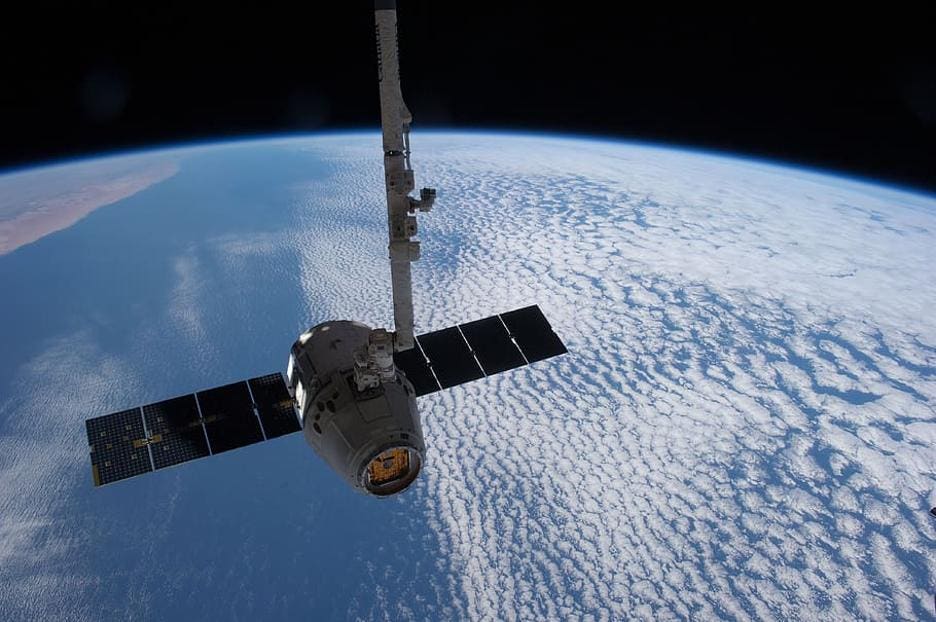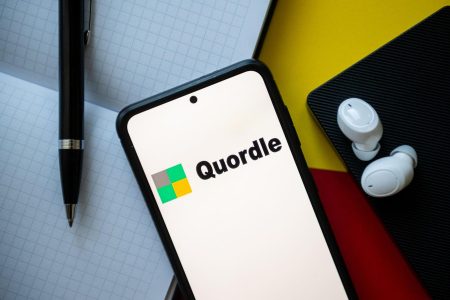In the early 1960s, U.S. President John F. Kennedy set a bold vision for sending astronauts to the moon by the end of the decade. A lunar landing was intended as a show of strength, given that era’s geopolitical landscape. What resulted was a legendary space race between the U.S. and the Soviet Union that is chronicled in countless documentaries and some of my favorite movies, including The Right Stuff and Apollo 13.
Today, a new space race is emerging in telecommunications. Low earth orbit (LEO) satellite constellations promise to disrupt mature, higher-altitude geosynchronous earth orbit (GEO) deployments. The communications advantages of LEO are undeniable—lower latency given the shorter distance, lower power requirements and flexibility, because unlike GEO the technology does not require a fixed connection point. GEO’s limitations have also made it very expensive for subscribers and challenging to scale, given the significant investment required in both satellite construction and terrestrial infrastructure.
The latter is what LEO hopes to disrupt. It can sometimes seem like a billionaire boys club, with Jeff Bezos and Elon Musk very much front and center, each touting what they are doing in space. However, Starlink and AST SpaceMobile are emerging as the early front-runners in the LEO telecommunications world. I have had the opportunity to speak with some of the participants in this field to supplement my other research. So, let’s dive in!
LEO’s history
Credit OneWeb for kicking off LEO telecommunications efforts in 2012. Founded as WorldVu, the company later changed its name as it aimed to launch broadband services via satellite with the spectrum it acquired from SkyBridge’s bankruptcy. Despite OneWeb securing some funding over the years, it has stumbled in its deployment attempts, eventually entering bankruptcy itself less than three years ago. Although OneWeb has emerged from its financial hardships with new public and private investments and a focus on fixed broadband with dedicated equipment, it has allowed two others to accelerate past it in the space race to LEO and become the front runners for augmenting coverage for everyday cellular devices—Starlink and AST SpaceMobile.
Starlink
Starlink probably needs no introduction, given its association with Musk’s SpaceX operations. It offers broadband internet services to rural locations underserved by cable, fiber, LTE and 5G fixed wireless access services, and is supported by more than 4,000 satellites launched to date. In the long term, Musk promises to raise that number to 30,000 birds in the sky with a reusable design that aims to lower the cost of satellite construction. With that said, Musk has a track record of over-promises and under-delivery, as evidenced in his Tesla operations and recent stumbles with SpaceX.
One of the other significant challenges is that Starlink’s initial service has been fraught with both expensive consumer premise equipment and poor performance. These challenges could resolve themselves over time with scale, but the company’s partnership announcement with T-Mobile late last year might be premature.
Initially, the Starlink service is focused on enabling emergency text messaging in areas lacking coverage using T-Mobile’s mid-band spectrum assets, with plans to add voice and data later. What needs to be clarified now are the specific deployment plans and whether they could create interference with terrestrial mobile networks. To date, the specific details are lacking, prompting other operators such as AT&T to file concerns with the FCC through the newly formed Space Bureau.
AST SpaceMobile
AST SpaceMobile may not be as familiar to the public as Starlink and SpaceX. The company was founded in 2017, but its roots go much deeper. Founder, CEO and chairman Abel Avellan spent time with Ericsson early in his career before founding Emerging Markets Communications, which serviced the maritime industry and other mobility markets in the late 1990s. Avellan eventually sold the company for more than half a billion dollars.
Over the last seven years, AST SpaceMobile has invested $725 million in research and development with the help of industry stalwarts that include Vodafone, American Tower, Rakuten Mobile, Bell Canada and Samsung, resulting in 2,600 awarded or pending patents. While patent count is not a measure of success, one of AST’s foundational patents aims to solve the delay issue in synching hundreds of transactions on mobile devices with satellites that travel at an astounding 17,000 mph. An agreement signed with Nokia last year to support LTE and 5G terrestrial connectivity with a souped-up AirScale Single RAN platform also points to AST SpaceMobile’s technological strengths and partnership depth.
Avellan has laid a solid foundation for AST SpaceMobile. What I find compelling about the company’s vision is that it is rooted in a direct-to-device connection, unlike Starlink’s focus on fixed-point broadband services. However, Starlink seems to be moving beyond that focus, considering that it now also offers a mobility solution for recreational vehicles.
So far, AST SpaceMobile has launched two LEO satellites that integrate phased-array and digital beam-forming technologies to focus and pinpoint signals more accurately. However, more satellite launches are planned in the future. AST SpaceMobile has also signed agreements and understandings with more than 35 mobile network operators globally, including AT&T in the U.S., and the company is content to serve as a wholesaler to provide connectivity gap coverage. That gives AST SpaceMobile a decided edge over Starlink in driving scale and adoption; the wholesaler approach will allow it to serve a large swath of operators to monetize services, including fixed wireless access broadband, where Starlink is a direct competitor.
Wrapping up
So, the million-dollar question is: Who will win the LEO satellite space race? It is early days yet; I have an informed guess. The competition among Starlink, AST SpaceMobile and others including OneWeb will breed innovation, but I will give the edge to AST SpaceMobile in the longer term, given its technology and operator partnerships, intellectual property and the early decision to connect its satellite communications direct to the cellular device. The company’s go-to-market strategy, which taps into existing terrestrial cellular infrastructure and an install base of millions of mobile devices, is also compelling, in contrast with Starlink’s plan to provide and monetize fixed access services on a smaller scale.
Maybe the most powerful proof suggesting AST SpaceMobile’s potential to lead in LEO was the first smartphone-to-satellite phone call, made in April on a Samsung device over the AT&T network. The latter is an extraordinary accomplishment that eclipses emergency text messaging support. One thing is abundantly clear to me: LEO satellite connectivity will play a major role in bridging the digital divide for nearly three billion people globally who don’t have access to the internet. I’ll be fascinated to see how competition in this market plays out as that vision becomes a reality.
Moor Insights & Strategy provides or has provided paid services to technology companies like all research and tech industry analyst firms. These services include research, analysis, advising, consulting, benchmarking, acquisition matchmaking, and video and speaking sponsorships. The company has had or currently has paid business relationships with 8×8, Accenture, A10 Networks, Advanced Micro Devices, Amazon, Amazon Web Services, Ambient Scientific, Ampere Computing, Anuta Networks, Applied Brain Research, Applied Micro, Apstra, Arm, Aruba Networks (now HPE), Atom Computing, AT&T, Aura, Automation Anywhere, AWS, A-10 Strategies, Bitfusion, Blaize, Box, Broadcom, C3.AI, Calix, Cadence Systems, Campfire, Cisco Systems, Clear Software, Cloudera, Clumio, Cohesity, Cognitive Systems, CompuCom, Cradlepoint, CyberArk, Dell, Dell EMC, Dell Technologies, Diablo Technologies, Dialogue Group, Digital Optics, Dreamium Labs, D-Wave, Echelon, Ericsson, Extreme Networks, Five9, Flex, Foundries.io, Foxconn, Frame (now VMware), Fujitsu, Gen Z Consortium, Glue Networks, GlobalFoundries, Revolve (now Google), Google Cloud, Graphcore, Groq, Hiregenics, Hotwire Global, HP Inc., Hewlett Packard Enterprise, Honeywell, Huawei Technologies, HYCU, IBM, Infinidat, Infoblox, Infosys, Inseego, IonQ, IonVR, Inseego, Infosys, Infiot, Intel, Interdigital, Jabil Circuit, Juniper Networks, Keysight, Konica Minolta, Lattice Semiconductor, Lenovo, Linux Foundation, Lightbits Labs, LogicMonitor, LoRa Alliance, Luminar, MapBox, Marvell Technology, Mavenir, Marseille Inc, Mayfair Equity, Meraki (Cisco), Merck KGaA, Mesophere, Micron Technology, Microsoft, MiTEL, Mojo Networks, MongoDB, Multefire Alliance, National Instruments, Neat, NetApp, Nightwatch, NOKIA, Nortek, Novumind, NVIDIA, Nutanix, Nuvia (now Qualcomm), NXP, onsemi, ONUG, OpenStack Foundation, Oracle, Palo Alto Networks, Panasas, Peraso, Pexip, Pixelworks, Plume Design, PlusAI, Poly (formerly Plantronics), Portworx, Pure Storage, Qualcomm, Quantinuum, Rackspace, Rambus, Rayvolt E-Bikes, Red Hat, Renesas, Residio, Samsung Electronics, Samsung Semi, SAP, SAS, Scale Computing, Schneider Electric, SiFive, Silver Peak (now Aruba-HPE), SkyWorks, SONY Optical Storage, Splunk, Springpath (now Cisco), Spirent, Splunk, Sprint (now T-Mobile), Stratus Technologies, Symantec, Synaptics, Syniverse, Synopsys, Tanium, Telesign,TE Connectivity, TensTorrent, Tobii Technology, Teradata,T-Mobile, Treasure Data, Twitter, Unity Technologies, UiPath, Verizon Communications, VAST Data, Ventana Micro Systems, Vidyo, VMware, Wave Computing, Wellsmith, Xilinx, Zayo, Zebra, Zededa, Zendesk, Zoho, Zoom, and Zscaler. Moor Insights & Strategy founder, CEO, and Chief Analyst Patrick Moorhead is an investor in dMY Technology Group Inc. VI, Fivestone Partners, Frore Systems, Groq, MemryX, Movandi, and Ventana Micro.
Read the full article here










